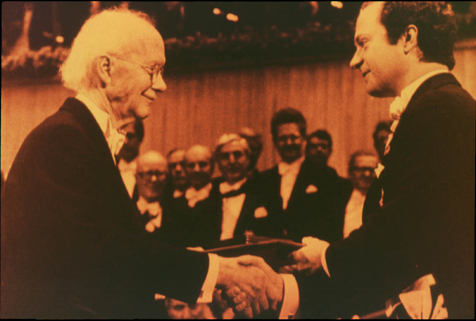
Faculty Research 1980 - 1989
Bovine olfactory cilia preparation: thiol-modulated odorant-sensitive adenylyl cyclase.
Document Type
Article
Publication Date
1989
Keywords
Animal, Cattle, Cell-Membrane, Cell-Separation, Cilia, Dithiothreitol, Enzyme-Activation, Epithelium, Forskolin, Guanosine-5'-O-(3-Thiotriphosphate), Guanosine-Triphosphate, Odors, Olfactory-Mucosa, Rats, Second-Messenger-Systems, Smell, SUPPORT-NON-U-S-GOVT, SUPPORT-U-S-GOVT-NON-P-H-S, SUPPORT-U-S-GOVT-P-H-S, Thionucleotides, Turbinates
First Page
68
Last Page
72
JAX Source
Biochim Biophys Acta 1989 Sep; 1013(1):68-72.
Abstract
We have characterized the adenylyl cyclase activity in a newly developed preparation of isolated olfactory cilia from the bovine chemosensory neuroepithelium. Like its counterparts from frog and rat, the ciliary enzyme was stimulated by guanine nucleotides, by forskolin, and by a variety of odorants in the presence of GTP. The main difference between the bovine olfactory cilia preparation and the frog and rat olfactory cilia preparation is that odorant stimulation of the bovine olfactory adenylyl cyclase is strongly inhibited by submillimolar concentrations of dithiothreitol. This inhibition is a consequence of a concomitant increase in the GTP-stimulated level and the decrease of the odorant stimulation of the enzyme. Nasal respiratory cilia have a much lower level of adenylyl cyclase activity and show no odorant stimulation. Owing to the large quantities of material available, the bovine olfactory cilia preparation is advantageous for studies of the proteins involved in chemosensory transduction.
Recommended Citation
Lazard D,
Barak Y,
Lancet D.
Bovine olfactory cilia preparation: thiol-modulated odorant-sensitive adenylyl cyclase. Biochim Biophys Acta 1989 Sep; 1013(1):68-72.

